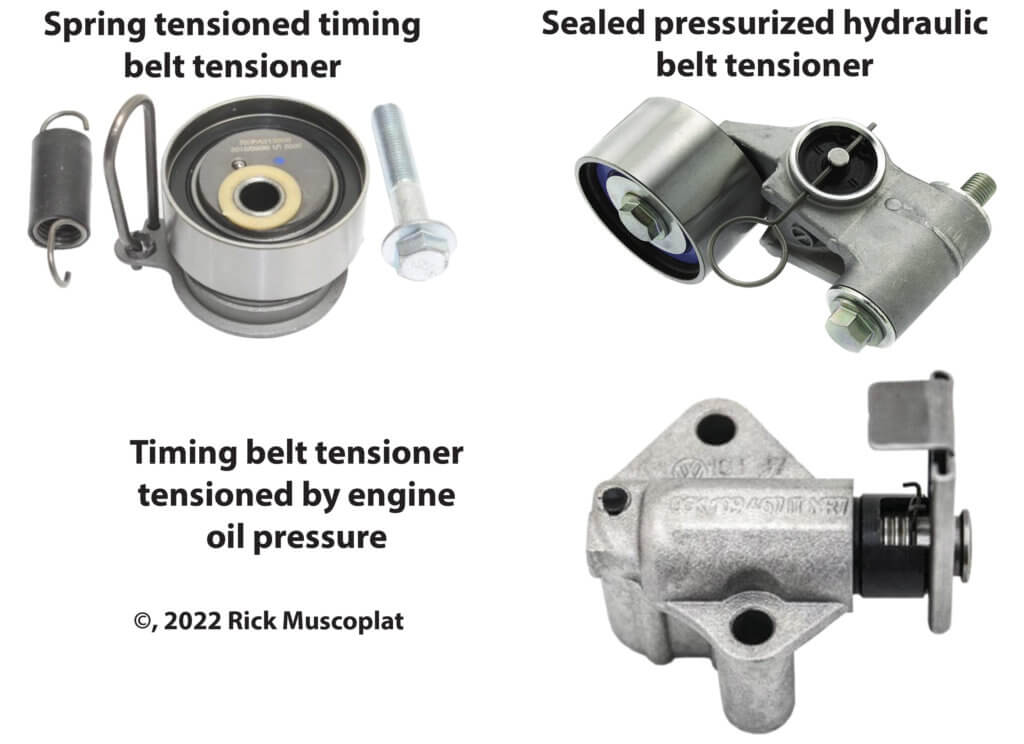Timing belt tensioner — Everything you need to know
Timing Belt Tensioner — How Each Type Works and Fails
The timing belt tensioner in your engine can be one of three different styles: spring tensioned, sealed and pressurized hydraulic style, and the oil pressure operated. Each type has advantages and disadvantages and different ways of failing.
Spring style tensioner
Spring style timing belt tensioners were used in the early days of timing belts. The installer would set initial tension by moving the tensioner to a set alignment point or resistance and then locking down the mounting bolts. The spring tension would keep the timing belt properly tensioned from that point on.
The sealed and pressurized hydraulic tensioner
These units contain pressurized hydraulic fluid much like a shock absorber. When new, the plunger is held in the fully compressed position by a pin. Once mounted in place, the installer removes the pin and the internal fluid pressure pushes the tensioner shaft out to automatically appliy the correct amount of tension to the belt.
Oil pressure regulated timing belt tensioner
This type uses engine oil pressure to move the piston out to apply tension to the belt. The oil pressure style tensioner doesn’t retract when the engine is shut off, it only uses engine oil pressure to maintain a bit more pressure on the belt when the engine is running. There’s no danger of this tensioner removing all tension when the engine is off.
©, 2022 Rick M

3 types of timing belt tensioners
How the different types of tensioners fail
All units that incorporate an idler are susceptible to idler bearing failure, which is the #1 reason for replacing the tensioner any time you change a timing belt.
A spring timing belt tensioner is susceptible to the loss of spring tension or a spring breaking due to the high number of cycles.
Sealed hydraulic units can leak and lose their ability to apply pressure to the belt. In addition, they’re easily damaged when reused. Many units required that the shaft be compressed slowly, in some cases, no faster than 1″ in a three minute period or be seal can be damaged.
The oil pressure units can leak from the gasket or wear due to neglected oil changes
©, 2022 Rick Muscoplat
Posted on by Rick Muscoplat